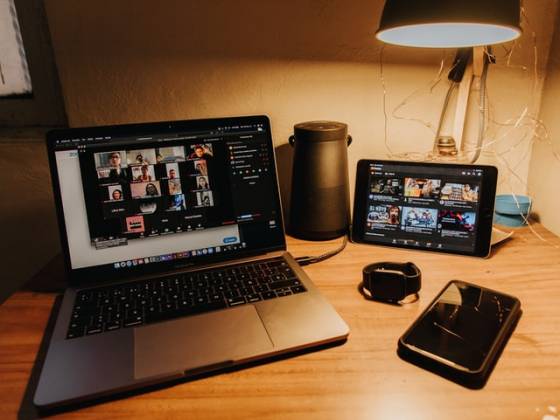The past two months have accelerated the digital revolution like nothing else and it has been a turning point for video communications.
Like many fellow communicators, over the last few years I’ve been encouraging executives to do more video messages and communications. Communications is all about sharing and video enables you not just to share content but to easily share emotions. This makes it a brilliant tool for motivating, inspiring or imparting important information. Executives have typically fallen into two distinct camps – the ones that run a mile and the eager beavers who want to film everything.
The pandemic has changed that. The ubiquitous Zoom, Skype and Microsoft Teams conference calls have made everyone a video star. We’ve all got over the fear of seeing ourselves on screen - what was once a big deal is now a standard part of the working day.
People are realising that video is simply another way of communicating a message. Like social media, it’s just another channel and another tool in the communications toolbox.
And like all good tools, video works best when you follow some basic rules. If you’re asked to record a short message or run a session on Zoom here are some things to consider:
- Have a script
Having a clear idea of what you want to say, what your takeaway message is and what actions you want people to take is essential. Plot out what you want to say and use notes to help prompt you. Be aware of timings, a script for a one minute video should be around 150-170 words - surprisingly short.
- Rehearse
You need to invest time in preparing and planning your messages and making sure that they sound natural when you speak them. The spoken word is different to the written word so always run through and adapt a script as you need to.
- Keep it personal
Keep video messages personal, speak as if you are talking to another person. This will make it easier for you and help ensure you come across as natural and friendly.
- Consider your background
With so many of us working from home, it’s important to choose an appropriate background. If you’re a CEO and you’re announcing pay cuts its probably not wise to have your Damien Hirst sculpture in the background, similarly if you’re trying to impress the boss avoid giving them a glimpse of last night’s Deliveroo boxes and your laundry. If in doubt, a bookshelf has become the ubiquitous safe option – just curate your books carefully and prepare to be judged on your literary choices!
- Vanity is ok!
I’ve seen one too many a screenshot of a zoom webinar on Twitter where at least one participant is sat in the dark, looking down on everyone or is hiding in the corner of their box. Good lighting and camera angles are important. You want to communicate a message and background and angles shouldn’t distract. Natural lighting is best. Position yourself in the middle of the screen – not too close, not too distant. Have the camera a little bit above your eyesight so you are looking just slightly up. This will work more miracles than any Botox can!
- Avoid the extras
Kids/housemates making an odd appearance on your work calls to colleagues = charming. Kids/housemates on your video presentation to the entire office = distracting. Find a time when you can make a recording without being disturbed.
- Written comms is still important
While video has taken off, there are some messages that are still best explained in writing: anything that might need to be digested and referred to such as policy updates and complex messages that might lose a viewer’s attention on video. Video is great for bringing topics to life, helping to explain a new concept and for giving praise.
With more of us WFH and many tech giants announcing this is likely to be a permanent state of affairs, video is most definitely here to stay. We can’t rewind, we’ve gone too far. So, I say embrace it.






Comments